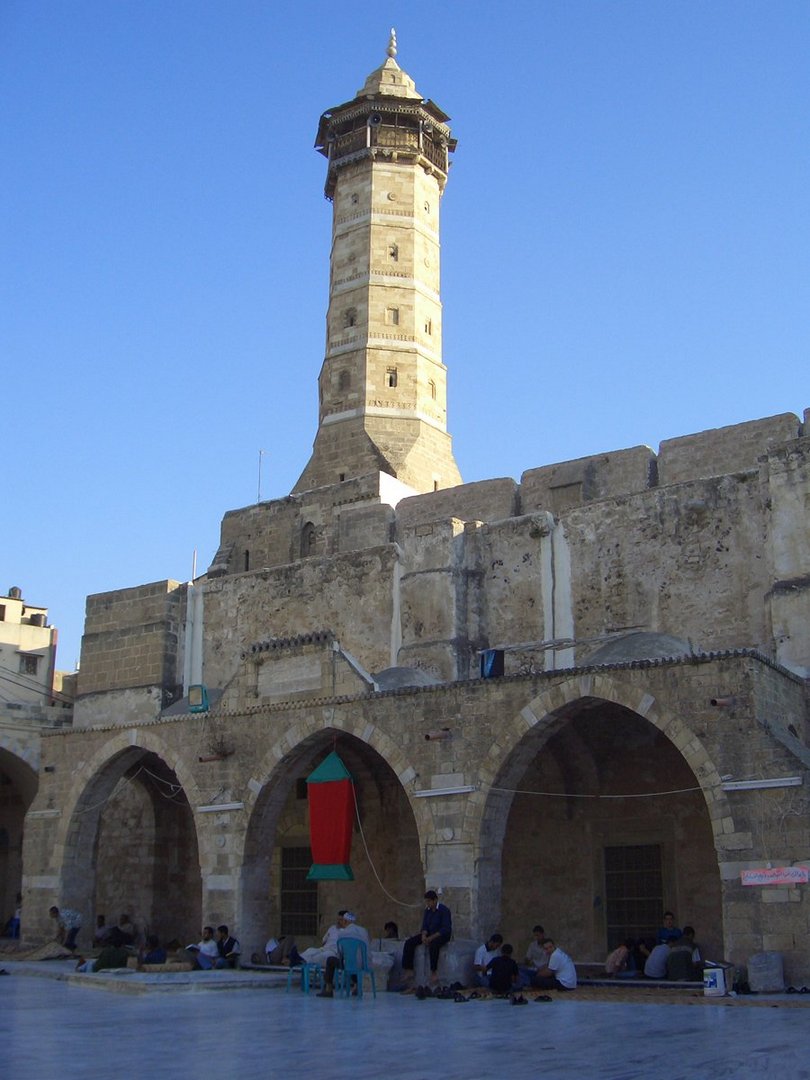Description
Property Name: Great Mosque of Gaza, Omari Grand Mosque, Gaza
Inventory No: 972-2-26
Date of infill of the inventory form: 2020-08-18
Country (State party): Palestine
Province: Gaza Strip
Town: Levant / Gaza
Geographic coordinates: 31°30’15.35″N
34°27’51.92″E
Historic Period: Early Islamic
Year of Construction: 7th century
Style: Ottoman
Original Use: Mosque
Current Use: Mosque
Architect: Unknown
Significance
The oldest mosque in Gaza City, Al-Omari Mosque is located in the center of Old Gaza near the old market. It covers an area of 4100 square meters and a building area of 1190 square meters. It has 38 columns of beautiful and solid marble, which reflects the splendor of the ancient architecture in Gaza City. Originally, the Great Mosque was a church established by the Byzantine Queen Eudocia. When Gaza was liberated in the days of the Caliph Omar ibn al-Khattab, this church became a mosque, and a mihrab and minbar were erected there. It is called the Omari – Mosque after the Caliph Omar, and the Great Mosque because it is the largest mosque in Gaza.
Selection Criteria
ii. to exhibit an important interchange of human values, over a span of time or within a cultural area of the world, on developments in architecture or technology, monumental arts, town-planning or landscape design
iii. to bear a unique or at least exceptional testimony to a cultural tradition or to a civilization which is living or which has disappeared
vi. to be directly or tangibly associated with events or living traditions, with ideas, or with beliefs, with artistic and literary works of outstanding universal significance
State of Preservation
After the Islamic conquest of the area, Palestine was liberated by the Muslim leader Umar ibn al-Aas, and most of its people converted to Islam, including the majority of people in Gaza. It was then the Al-Omari Mosque was built on the ruins of the Byzantine church, and named after Caliph Omar Bin Al Khattab. After this period the site underwent many conversions. During the Crusader Period Mosque was replaced with the Norman-style cathedral of St. John the Baptist. The church was later incorporated in the Ayyubid and Mamluk mosque that would next occupy the site. This mosque was later destroyed by the Mongols in 1260AD, but was rebuilt, only to fall again after an earthquake in the late 13th century. After the earthquake, the Mosque was again repaired, but didn’t undergo restoration to its present-day form until the Ottomans took control in the 16th century.
The current architecture of the Al Omari Mosque preserves parts of its turbulent history and its many incarnations. Each restoration of the site has preserved some parts of its previous forms. This can be seen in the façade, which features typical Crusader style arches. Two of the three main aisles of the Mosque are also believed to retain some parts of the previous Crusader cathedral. The impressive minaret of the Mosque is made in the traditional Mamluk style, with an octagonal tower sat on a square base. Inside the Mosque, the floors are made of glazed tiles and the doorways and domes of marble.
References
Al-Aqsa University website: https://www.alaqsa.edu.ps/


